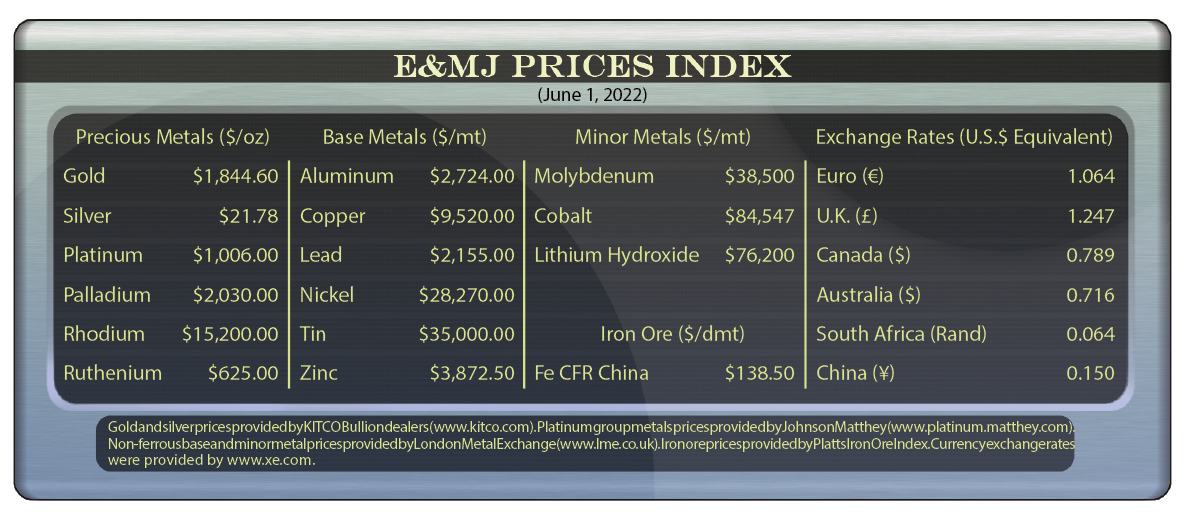A new report from Moody’s indicates that a tight supply-demand balance will keep metal prices elevated, citing limited supply and fear of scarcity as the main reason. Production capacity has not increased significantly for most metals in recent years and Moody’s doesn’t expect it will during the coming 12 to 18 months. Mining companies are cautious after a burst of debt-funded expansion in 2010-2015 led to oversupply and high leverage. Additionally, factors such as changing political and regulatory environments, and rising social concerns, are delaying some projects. Mining companies have also directed a portion of their capital spending to technologies and processes aimed at reducing carbon emissions rather than increasing production. They have also increased shareholder-friendly initiatives such as share buybacks and dividends, using the large cash flows they generated in 2020-2021.
Inventories are decreasing because production has not increased at the same pace as demand growth. Lower inventories combined with supply-chain disruptions means the supply-demand balance was tight even before Russia’s invasion of Ukraine disrupted production further. Russia is a significant producer of some base and precious metals, iron ore and steel. The tight balance means the industry is exposed to supply and demand shocks, such as those triggered by the military conflict and the coronavirus pandemic.
Political and social issues in other regions also have the potential to constrain supply. Social unrest has disrupted copper production in Peru. In Chile, environmental regulators denied Anglo American’s license to expand its Los Bronces mine.
Meanwhile, commodity demand continues to be driven largely by economic growth, industrial activity and infrastructure investments. Moody’s expects G-20 economies will expand by 3.1% in 2022 and 2.9% in 2023. China’s GDP will grow 4.5% in 2022 and 5.3% in 2023, which will support demand because China is a major commodity consumer.
Risks to the outlook remain, as the escalating Russia-Ukraine crisis, broader oil and gas sanctions, and ongoing monetary policy tightening have the potential to tip the global economy into a recession. If economic growth were to decline, especially in China and developed countries, demand growth could also decline.
Pandemic-driven lockdowns in China have temporarily reduced demand for commodities. Demand for some base metals is below normal levels for this time of year, for example. Moody’s expects a release of pent-up demand when restrictions are eased. New waves of COVID-19 would weigh on demand for base metals and steel, and consequently, coal and iron ore.
Still, the tight supply-demand balance will keep prices historically high — and volatile — during the coming 12-18 months. Moody’s has raised its near-term (12-month) price assumptions for metals and mining commodities to reflect the heightened volatility resulting from the Russia-Ukraine crisis. The crisis pushed up prices that were already elevated at the start of the year because of economic recovery in many geographies and the tight supply-demand balance.
Readers can access the entire report, “Metal & Mining – Global: Outlook stable as prices and EBITDA retreat from peaks but remain elevated,”at www.moodys.com/researchdocumentcontentpage.aspx?docid=PBC_1319765.










